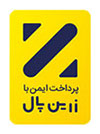English Language Proficiency Levels
Glossaries
Source of proficiency level descriptions: Beginning to Advanced: Teachers of English to Speakers of Other Languages (TESOL), Inc., 1997, pp. 20-21.
Level 1, Emergent or Pre-functional
Students at this level may understand isolated words, some high-frequency social conventions, and simple directions, commands, and questions. They rely on nonverbal cues such as gestures and facial expressions, and frequent repetition and rephrasing to understand spoken language. In conversation, they may be able to provide basic information in response to requests and questions. They can ask one-or two-word questions without regard to structure and intonation.
Regarding reading and prereading skills, students at this level may demonstrate an understanding of concepts of print and begin to track print. They may be able to distinguish letters from other symbols. They can imitate the act of reading (holding a book and turning pages), however, they get meaning mainly through pictures. Students at this level participate in writing activities by drawing pictures. They may be able to copy letters or form them from memory and may be able to copy some words. The can imitate the act of writing but their text does not transmit a message. They may attempt to apply writing conventions but do so inappropriately or correctly only when copying.
Level 2, Beginning
As LEP students’ oral comprehension increases, they begin to imitate verbalizations by using single words or simple phrases and begin to use English spontaneously. They gradually construct more meaning from the words themselves but the construction is often incomplete. They are able to generate simple texts that reflect their knowledge level of syntax. These texts may include a significant amount of nonconventional features such as invented spelling, grammatical inaccuracies, pictorial representations, surface features and rhetorical patterns of native language.
Level 3, Intermediate
At this level, students understand more complex speech, but still may require repetition. They acquire a vocabulary of stock words and phrases covering daily situations. They use English spontaneously, but may have difficulty expressing all their thoughts due to a restricted vocabulary and a limited command of language structure. Students at this level speak in simple sentences, which are comprehensible and appropriate but which often have grammatical errors. They may have some trouble comprehending and producing complex structures and academic language.
Proficiency in reading may vary considerably depending upon the learners’ familiarity and prior experience with themes, concepts, genre, characters, and so on. They are most successful constructing meaning from texts for which they have background upon which to build. They are able to generate more complex text, a wider variety of text, and more coherent text than beginners.
Level 4, Advanced
At this level, students’ language skills are adequate for most day-to-day communication needs. Occasional structural and lexical errors occur. Students may have difficulty understanding and using some idioms, figures of speech and words with multiple meanings. They communicate in English in new or unfamiliar settings but have occasional difficulty with complex structures and abstract academic concepts.
Students at this level may read with considerable fluency and are able to locate and identify the specific facts within the text. However, they may not understand text in which the concepts are presented in a decontextualized manner, the sentence structure is complex, or the vocabulary is abstract. They can read independently, but may have occasional comprehension problems. They produce text independently for personal and academic purposes. Structure, vocabulary, and overall organization approximate the writing of native speakers of English. However, errors may persist in one or more of these domains.
Level 5, Proficient Trial-mainstreamed
At this final stage, students usually can participate in academic topical conversations without difficulty. In most cases, they can follow complex and multi-level directions without assistance, and they can understand oral information provided via electronic audio and video media. Students at this level usually speak English fluently in social and grade-level academic settings, and they control age-appropriate syntax and vocabulary in speech.
Generally, students read and understand factual information in non-technical prose as well as discussions on concrete topics related to special events. They comprehend standard newspaper items addressed to the general reader, correspondence reports and technical materials. At this level they can write short papers and clearly express statements of position, points of view and arguments. In their writing, they usually show control of varied sentence structures, spelling and vocabulary, expressing well-developed thoughts.

 Persian
Persian  English
English  Arabic
Arabic 



